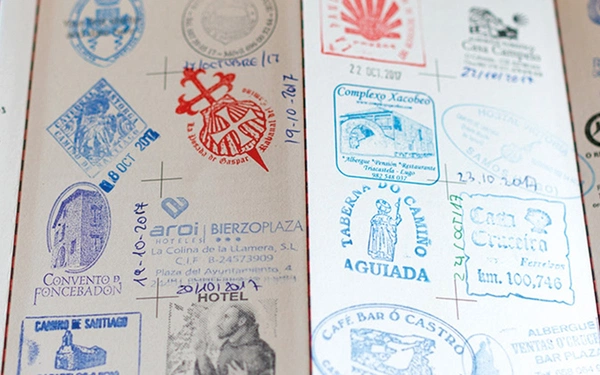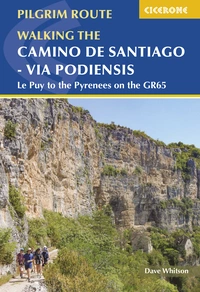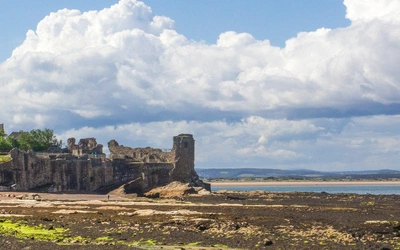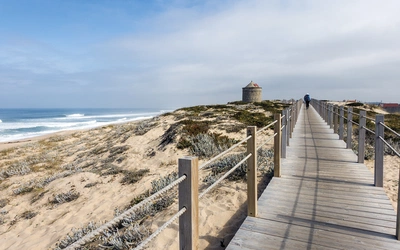An introduction to the Pilgrims’ Way
If you’ve ever wanted a pilgrimage route through England that combines history, countryside and quiet reflection, the Pilgrims’ Way might be just what you’re looking for. Following in the footsteps of medieval pilgrims who journeyed to the shrine of St Thomas Becket in Canterbury, the route winds through rolling chalk downs, ancient woodlands and pastoral farmland, passing historic churches, market towns and quiet villages along the way, offering walkers a journey that is both scenic and steeped in centuries of heritage. Here's what you need to know.
The Pilgrims' Way
To Canterbury from Winchester and London
£14.95
This guidebook describes an ancient pilgrimage route in southern England from Winchester in Hampshire, or Southwark, London to Canterbury, a 138 mile walk through wood and farmland, with views across the Weald. Divided into stages of about 10 miles, with route summary and information on public transport, accommodation and places of interest.
More information
Where does the Pilgrims’ Way start and end?
There are two traditional starting points for the Pilgrims’ Way. The classic route begins at Winchester Cathedral in Hampshire, where pilgrims set out from what was once England’s ancient capital. An alternative start is from Southwark Cathedral in London, following the route many medieval pilgrims would have taken from the capital. Both routes end at Canterbury Cathedral in Kent, one of the most important pilgrimage destinations in medieval Europe and still a place of reflection and welcome today.
How long is the route?
From Winchester to Canterbury the Pilgrims’ Way covers roughly 138 miles (222km). The London to Canterbury option is a little shorter at about 90 miles (145 kilometres). Whichever version you choose, the route follows the natural corridor of the North Downs, passing through chalk hills, farmland, woodland and the Kentish Weald. The path loosely follows the ancient trackways that pilgrims are thought to have used, though it now combines sections of public footpaths, quiet lanes and parts of the North Downs Way National Trail.
How many days does it take to walk?
Most walkers allow two weeks to complete the full route from Winchester, although fitter or more experienced walkers may do it in 10 to 12 days. From London, around a week to ten days is typical. Our guidebook divides the walk into 15 manageable stages, ranging from about 5 to 14 miles (7 to 22 km) each. This allows time to explore churches, rest in country pubs or take short detours to nearby attractions.
What will you experience along the way?
The Pilgrims’ Way offers a rich mix of landscapes and history. You’ll pass through rolling chalk hills, ancient woodlands, and pastoral farmland, with sweeping views across the Weald. Along the way are many reminders of the route’s heritage: tiny flint churches, medieval bridges, old inns and market towns that once offered hospitality to pilgrims. Highlights include Guildford, Farnham, Otford, Wrotham, and Chilham, each with its own charm and stories. In Kent, you’ll walk through vineyards, hop gardens and apple orchards, which change character through the seasons. There are also opportunities for quiet reflection, with stretches of path that feel far removed from modern life.
When is the best time of year to walk?
The Pilgrims’ Way can be walked year-round, but spring through early autumn (April to October) offers the most comfortable conditions. Spring brings wildflowers and blossom in the orchards, summer has long days and drier paths, and autumn adds colour to the woods and harvest scenes in the fields. Winter walking is possible, but expect mud, short days and limited accommodation availability in some places.
How do you get to the start?
Both starting points are easy to reach by public transport.
- Winchester is well connected by train from London Waterloo (about one hour). The cathedral is a short walk from the station.
- Southwark Cathedral is next to London Bridge station, served by mainline trains, the Underground and local buses.
Canterbury, at the end of the walk, also has regular train services to London and the South East, so it is simple to return after finishing your pilgrimage.
What accommodation is available?
There is a wide variety of accommodation along the route, from B&Bs and guesthouses to small hotels and traditional inns. Some walkers also use hostels, campsites or glamping sites, particularly in rural areas.
Many towns and villages have welcoming places to stay, often with strong connections to pilgrimage. Booking ahead is advisable, especially in summer or near popular visitor spots. The guidebook includes up-to-date information on accommodation options for each stage.
Can you get a pilgrim passport?
The pilgrim passport is called a pilgrim record and is available from the Winchester, Southwark and Rochester cathedral shops. It can be stamped at churches, pubs, hostels and hotels on the route. Some places will have their own local Pilgrims’ Way stamp.
Admission to Southwark and Rochester cathedrals is free. At Winchester any pilgrims wishing to start at St Swithun’s shrine are asked to give advance notice to obtain free admission. At Canterbury Cathedral free admission is normally available on presentation of a stamped pilgrim record.













